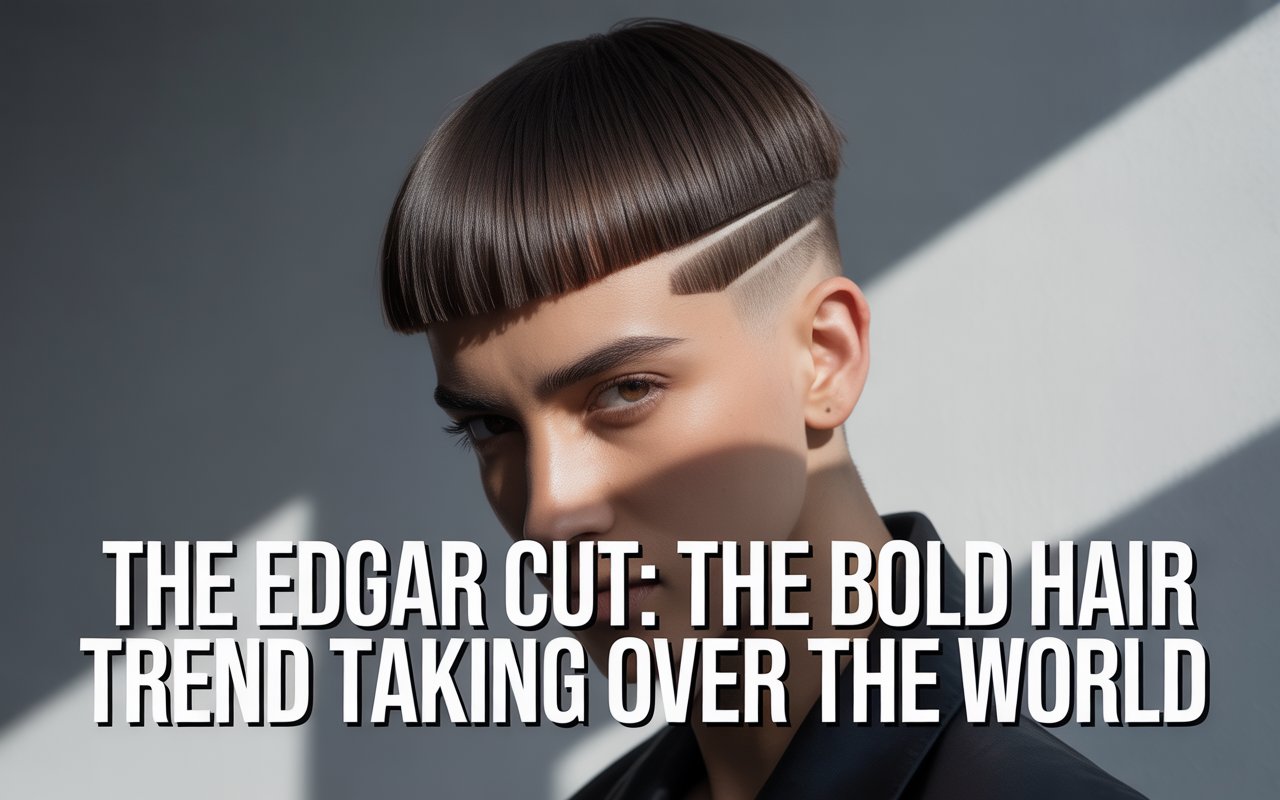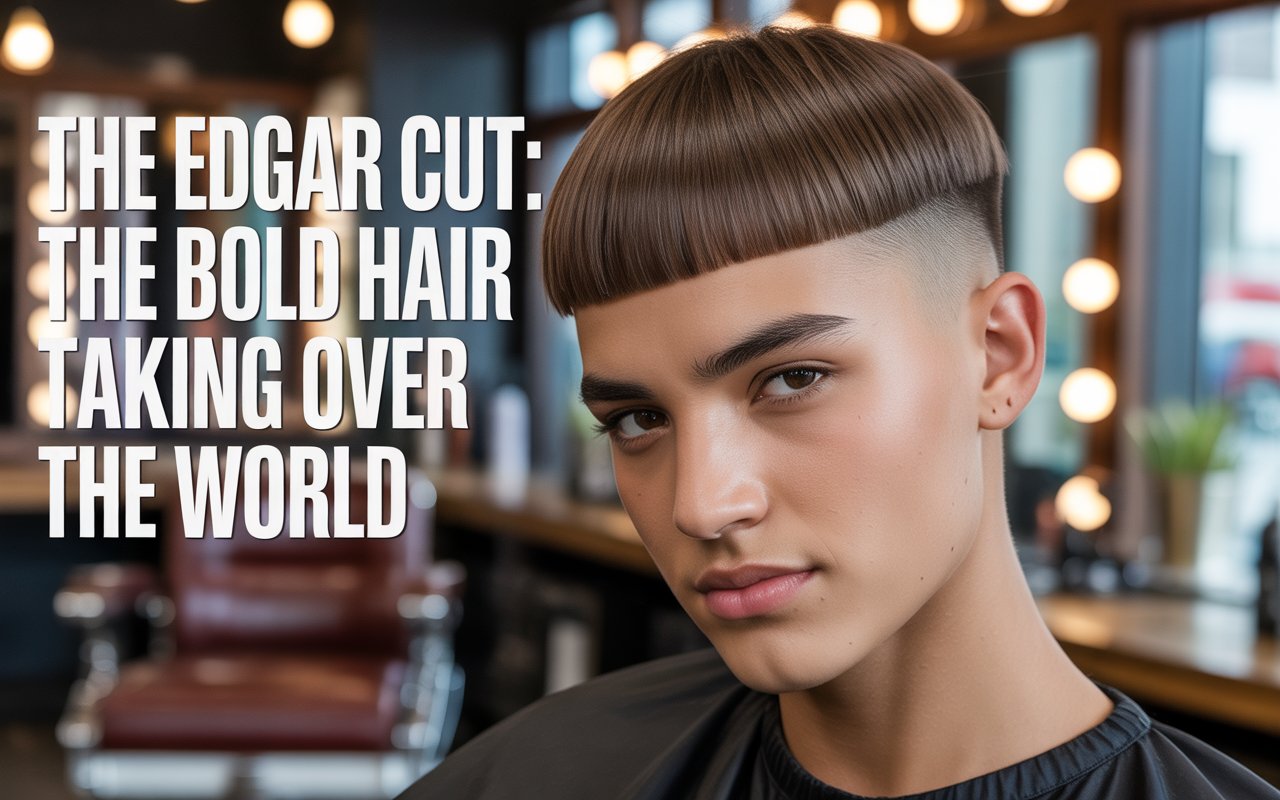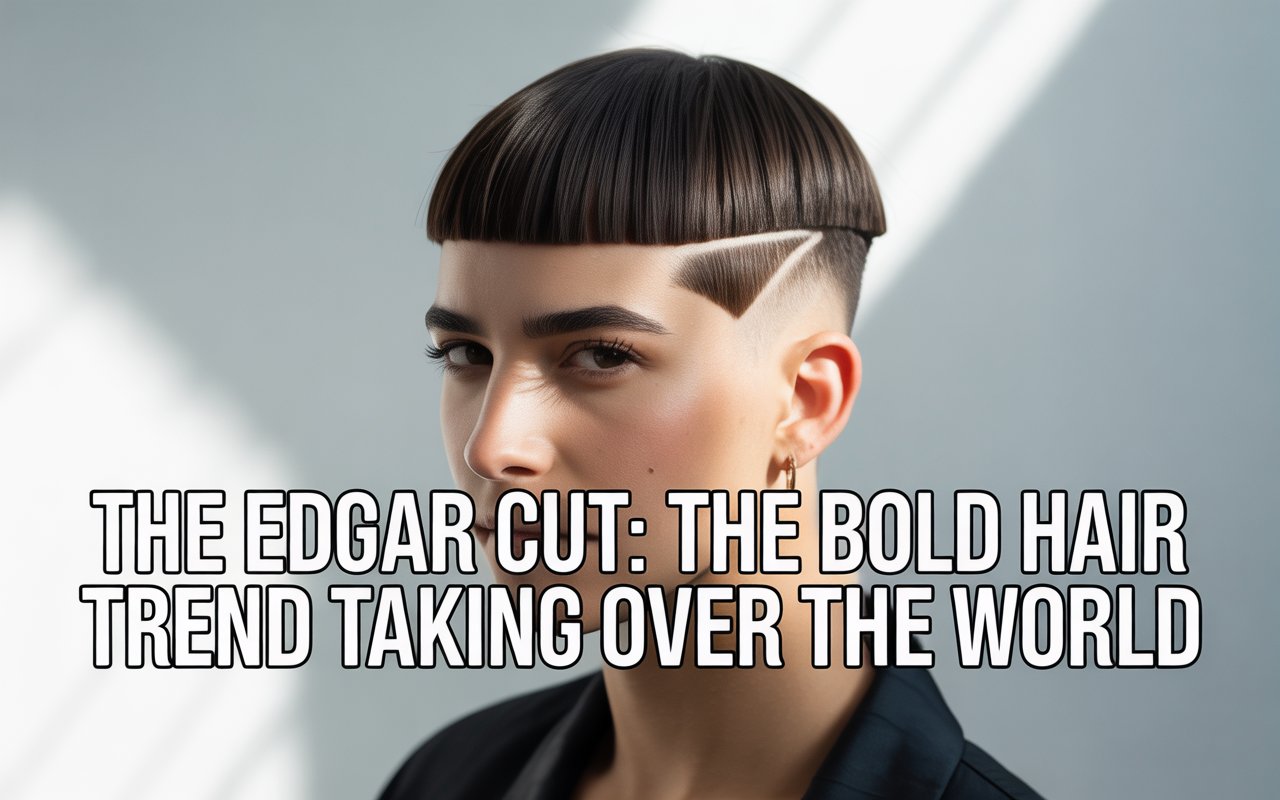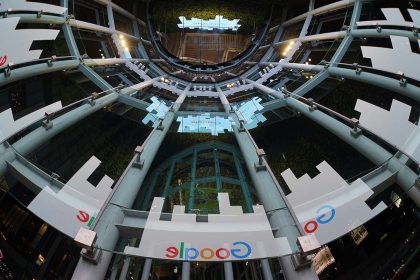If you’ve scrolled through TikTok, Instagram, or even walked through your local mall lately, you’ve probably seen it — the Edgar cut. It’s sharp, distinctive, and impossible to miss. But what exactly is this haircut, and why has it become one of the most talked-about men’s styles in recent years? Let’s dive deep into the origins, styles, variations, and meaning behind the Edgar cut — and why it’s not just a haircut, but a cultural statement.
What Is the Edgar Cut?
The Edgar cut is a modern men’s hairstyle known for its short, straight fringe across the forehead and a high fade or tapered sides. It has a bold, edgy look — almost like a cross between a Caesar cut and a modern fade.
Unlike softer, flowing styles, the Edgar cut has a clean, structured, and intentional look. The top is usually kept short and blunt, while the sides are faded sharply, creating a high-contrast appearance that emphasizes facial features.
Think of it as the hairstyle equivalent of a strong cup of coffee — short, sharp, and impossible to ignore.
The Origins of the Edgar Cut
You might assume this trend popped up overnight on social media, but the Edgar cut has roots that run deep, especially in Latino and Native American communities.
The haircut is often traced back to Mexican-American youth culture in the American Southwest. It’s said to have been inspired by a baseball player — Edgar Martínez of the Seattle Mariners — when a fan allegedly shaved the player’s image into his hair. The rest, as they say, is history.
But beyond the memes and viral moments, the Edgar cut carries cultural pride and individuality. For many young Latino men, it’s not just about looking stylish — it’s about expressing confidence, identity, and belonging.
Why the Edgar Cut Went Viral

So, what made the Edgar cut explode in popularity? The answer lies in social media and self-expression.
Platforms like TikTok, Instagram, and YouTube are flooded with tutorials, memes, and transformation videos showing guys going from regular fades to sharp Edgars — often with hilarious before-and-after captions.
It’s bold, it’s different, and it grabs attention — something today’s visual-driven culture thrives on.
But here’s the interesting part: the Edgar cut’s appeal goes beyond aesthetics. It has become a form of identity, particularly among young Latinos, symbolizing confidence, rebellion, and pride.
The Anatomy of the Edgar Cut
To understand why this haircut stands out, let’s break it down:
1. The Fringe (Front)
The defining feature is the straight, horizontal fringe across the forehead. It’s usually cut bluntly and kept short. This clean line gives the style its sharp, geometric edge.
2. The Fade (Sides and Back)
The sides are often high-faded or mid-faded, tapering smoothly into the skin. This creates contrast with the top, making the haircut look structured and modern.
3. The Top (Crown)
The top can vary slightly — some prefer a textured look, while others keep it flat and uniform. Barbers may use point-cutting or clippers to add a touch of roughness, giving it a natural finish.
4. The Edge-Up
The edge-up or line-up around the forehead, temples, and beard line gives the cut its sharp, clean finish.
Popular Variations of the Edgar Cut
Just like fashion, the Edgar cut has evolved into multiple versions — each catering to different personalities and preferences Here are some of the most iconic and talked-about Edgar cut styles that have taken the grooming world by storm:
1. Classic Edgar
Short on top, high fade on the sides, and a straight fringe in the front. Simple, clean, and sharp — the original trendsetter.
2. Curly Edgar
For men with natural curls, this version keeps the texture on top while maintaining the signature fade. It’s a great blend of personality and structure.
3. Wavy Edgar
If you have wavy hair, this version allows for a bit more movement while keeping the straight-edged front line intact.
4. Mullet Edgar (or Takuache Cut)
A daring fusion that combines the classic Edgar front with a mullet back — short in front, longer in the back. Popular among younger crowds who like to stand out.
5. High Fade Edgar
This cut features a very short fade on the sides, almost to the skin, emphasizing the contrast between the top and sides.
6. Low Fade Edgar
A subtler option where the fade starts lower, offering a cleaner, more professional vibe.
7. Textured Edgar
This version adds choppy or layered texture to the top for a messier, modern look — perfect for those who prefer a more casual, undone style.
Who Does the Edgar Cut Suit Best?

While anyone can rock an Edgar cut with confidence, it tends to look best on men with oval, square, or angular face shapes.
Why? Because the blunt fringe draws attention to the eyes and cheekbones, enhancing those strong features.
Men with rounder faces might want to opt for a slightly higher fade or more texture on top to add height and balance the look.
Think of the Edgar cut as a frame for your face — it highlights your structure like a well-cut suit highlights your shoulders.
Cultural Significance and Identity
What’s fascinating about the Edgar cut is that it’s more than a hairstyle — it’s a symbol of culture and identity.
Among many Mexican-American and Latino youth, the Edgar represents a proud statement of self — a mix of urban swagger, cultural roots, and individuality.
Of course, it has also faced criticism and stereotypes. Some label it “the Takuache cut” and associate it with certain subcultures or behaviors. But as with any trend, what really matters is how you own it.
To many, the Edgar cut is about confidence, pride, and standing out in a world that often pushes conformity.
Getting the Edgar cut right depends a lot on your barber’s skill and your communication. Here’s how to make sure you leave the chair looking sharp:
-
Show a picture. Visual references are key — bring photos of the exact Edgar style you want.
-
Specify the fade. Decide if you want a high, mid, or low fade.
-
Discuss texture. Do you want a flat top or a textured one?
-
Keep the fringe in focus. Make sure the front fringe is cut blunt and straight — that’s the heart of the look.
Remember, even a small tweak in length or fade level can change the overall vibe of the haircut.
How to Style an Edgar Cut at Home

Maintenance is easy — another reason the Edgar cut is so popular. Here’s how to keep it fresh:
1. Use a Good Pomade or Matte Paste
A small amount helps keep the top in place and adds definition without looking greasy.
2. Regular Trims
Because the Edgar cut depends on sharp lines, visit your barber every 2–3 weeks to keep it clean.
3. Brush or Comb Daily
Keep your fringe neat and the fade smooth by brushing daily.
4. Wash and Condition
Use a gentle shampoo to avoid buildup and maintain healthy hair.
It’s like keeping a sports car shiny — the details make all the difference.
Why Some People Love (and Others Hate) the Edgar Cut
Like any strong trend, the Edgar cut divides opinions. Some call it bold and confident, while others see it as too extreme.
Those who love it appreciate its freshness, low maintenance, and strong personality.
Those who dislike it sometimes associate it with certain youth stereotypes or think it’s “too much.”
But here’s the truth: style is self-expression. Whether you’re rocking a sleek pompadour, a fade, or an Edgar, it’s all about how it makes you feel.
Celebrities and Influencers Rocking the Edgar Cut
Many social media stars and athletes have popularized this cut, from TikTok creators to soccer players and musicians.
Some Mexican-American rappers and influencers have made the Edgar cut part of their signature look — combining it with streetwear, fades, and clean beards for a striking aesthetic.
It’s become a trend that transcends borders, appearing in pop culture, sports, and even high fashion editorials.
Edgar Cut vs. Caesar Cut: What’s the Difference?
At first glance, the Edgar and Caesar cuts look similar — both have short fringes and tidy shapes. But there’s a key difference:
-
The Caesar cut has a softer fringe and less contrast between the top and sides.
-
The Edgar cut has a sharper, straighter fringe and a more aggressive fade.
In short, if the Caesar is the calm older brother, the Edgar is the wild, younger sibling who loves to make an entrance.
Maintenance Tips: Keeping It Fresh
To keep your Edgar cut looking fresh and crisp:
-
Get a trim every 2–3 weeks to maintain the fade and fringe line.
-
Avoid over-styling — this look thrives on simplicity.
-
Use lightweight styling products like matte paste or powder.
-
Clean up your edges between barber visits with a trimmer.
It’s a haircut that rewards precision and consistency — small details keep it looking intentional rather than messy.
Why the Edgar Cut Is Here to Stay
Trends come and go, but the Edgar cut seems to have carved a permanent spot in men’s fashion.
Why? Because it’s low-maintenance, modern, and full of personality. It represents a new generation that values confidence over conformity.
It’s more than just a haircut — it’s a cultural wave, a statement, and for many, a badge of pride.
Frequently Asked Questions (FAQs)
1. What is the main difference between an Edgar cut and a Caesar cut?
The Edgar cut features a straight, blunt fringe and sharper fades, while the Caesar cut has softer edges and a more natural transition between top and sides.
2. Is the Edgar cut suitable for all hair types?
Yes! Whether you have straight, wavy, or curly hair, your barber can tailor the Edgar cut to fit your texture.
3. How often should I get my Edgar cut trimmed?
To keep the shape crisp, you should visit your barber every 2–3 weeks.
4. Can I style an Edgar cut at home easily?
Definitely. It’s a low-maintenance haircut — a bit of pomade or matte paste and regular brushing will keep it looking sharp.
5. Why is the Edgar cut so popular among young people?
Because it’s bold, modern, and culturally expressive. It lets people show confidence, individuality, and pride — especially among Latino youth communities.
Conclusion: The Edgar Cut as a Modern Statement
The Edgar cut isn’t just a passing fad — it’s a symbol of style, culture, and confidence.
It challenges traditional norms of what “masculine” or “clean-cut” should look like and celebrates individuality in a world of trends.
So, whether you’re thinking about getting one or just curious about its rise, remember: the Edgar cut is about more than a sharp fade and straight fringe — it’s about owning your look and expressing who you are.













